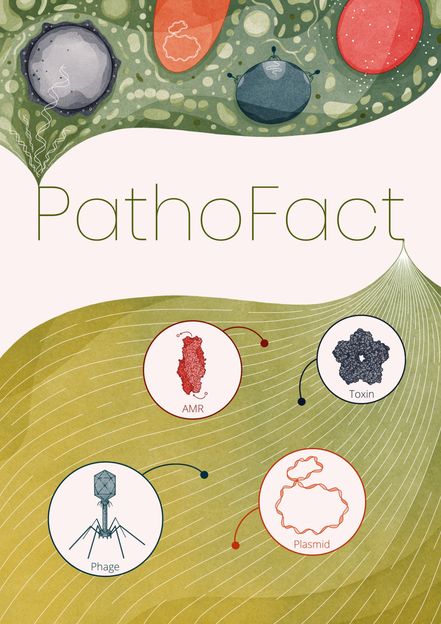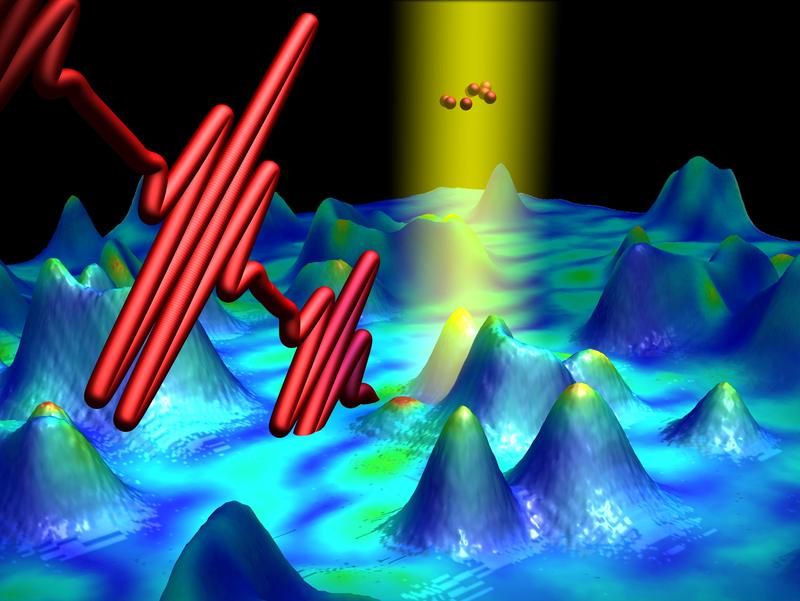PathoFact identifies pathogens faster and more accurately
New open access tool for the diagnosis of infections
Scientists from the Luxembourg Centre for Systems Biomedicine (LCSB) and the Department of Life Sciences and Medicine of the University of Luxembourg have developed a new bioinformatics tool that can help them identify pathogens much faster and more accurately than was ever possible with conventional diagnostic methods. The team led by Professor Paul Wilmes, head of the Systems Ecology group at the LCSB, makes use of so-called metagenomic data. Using high-throughput methods, they sequence all of the genome fragments obtained from samples that potentially contain pathogenic organisms. The new bioinformatics tool – which the LCSB team has named PathoFact – compares these gene sequences against an integrated database. PathoFact identifies the genes of microorganisms that are responsible for their pathogenic potential or – in the case of bacteria – their antibiotic resistance. Based on this knowledge, the researchers can determine which pathogens are responsible for an infection and, in future clinical practice, suggest suitable treatments. PathoFact furthermore helps scientists to better understand the influence of microorganisms in the onset of chronic diseases such as Parkinson’s or rheumatoid arthritis.

Pathofact
© Valentina Galata
New research tool for the diagnosis of infections
Today, infections are still diagnosed using methods very similar to those of 120 years ago, from the days of Robert Koch and Louis Pasteur. Bacteria, for example, are isolated from patient samples, cultivated and then identified. It will often take several days to know what kind of infection a patient has or how it can be treated. “In the age of high-throughput genome sequencing, this should be faster,” says Prof. Paul Wilmes. “To speed things up, we need to advance the right bioinformatics techniques and combine them appropriately.” His team has done just that with PathoFact. In the lead was Laura de Nies, the first author of the paper and a PhD candidate in Prof. Wilmes’ group.
Among other things, PathoFact can use real-time data originating from so-called metagenomic sequencing. “This is where all of the genes of all microorganisms found in a sample are sequenced,” Laura de Nies explains: “Even while the sequencing is still running, PathoFact can already compare the data obtained against its integrated gene database.” PathoFact searches for genes that encode virulence factors or antibiotic resistances. Virulence factors for example include proteins that ensure a germ’s survival in the human body or toxic metabolic products that make us sick.
Scientists already know many genes that encode virulence factors and other microbial structures responsible for antibiotic resistance. Their sequences are recorded in PathoFact’s database. Yet, there will always be unknown ones. “With PathoFact, we can identify even those genes,” says Laura de Nies: “The proteins that the genes encode will resemble known structures. They will have certain features that are characteristic of virulence factors or antimicrobial resistance.” This means that with PathoFact the researchers can gain new knowledge about pathogens and identify species that have never been known to be pathogenic.
Chronic diseases and COVID-19
Prof. Wilmes’ main focus is on chronic diseases such as Parkinson’s or rheumatoid arthritis: there is a well substantiated theory that the onset of such diseases involves changes in the composition of the body’s microbial communities, or microbiome. “The bacteria that live in and on us are in constant competition with each other,” Wilmes says. “Certain circumstances in life can cause harmful organisms to become more prolific and to trigger a disease with their toxic products.” Using PathoFact, the scientists can now detect such shifts in the microbial ecosystem faster and more accurately than before – and move further ahead in their basic research into chronic diseases.
Paul Wilmes would like to see this tool benefit medical diagnoses. For example, it could be used by physicians to better predict severe cases of COVID-19. This viral disease is often accompanied by so-called co-infections. These are caused by bacteria or by viruses other than SARS-CoV-2. “With PathoFact, we can identify those pathogens faster than before. This opens up better possibilities for treatments, so that physicians may in future prevent severe progressions of COVID-19.” To make this possible, Prof. Wilmes is planning to collaborate with a large Luxembourg diagnostics company. “The company is using established methods to study samples, which we will analyse simultaneously with PathoFact. In this way, we will continue to improve and validate the high accuracy of our method, so that harmful microbial infections will be treated more rapidly and in a more targeted manner in the future.”
Original publication
Other news from the department science
Most read news
More news from our other portals
See the theme worlds for related content
Topic world Diagnostics
Diagnostics is at the heart of modern medicine and forms a crucial interface between research and patient care in the biotech and pharmaceutical industries. It not only enables early detection and monitoring of disease, but also plays a central role in individualized medicine by enabling targeted therapies based on an individual's genetic and molecular signature.

Topic world Diagnostics
Diagnostics is at the heart of modern medicine and forms a crucial interface between research and patient care in the biotech and pharmaceutical industries. It not only enables early detection and monitoring of disease, but also plays a central role in individualized medicine by enabling targeted therapies based on an individual's genetic and molecular signature.
























































